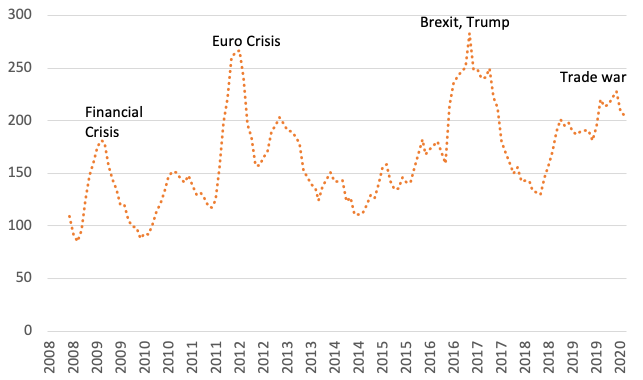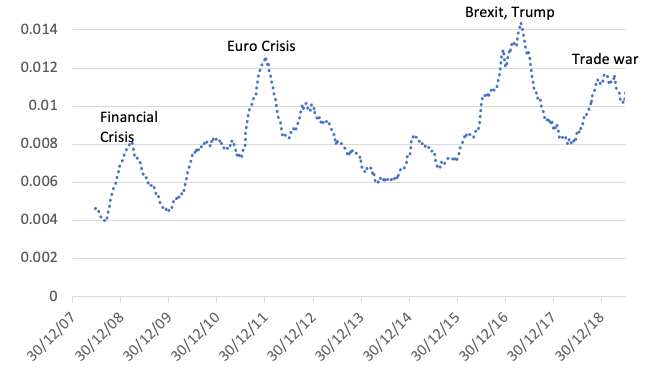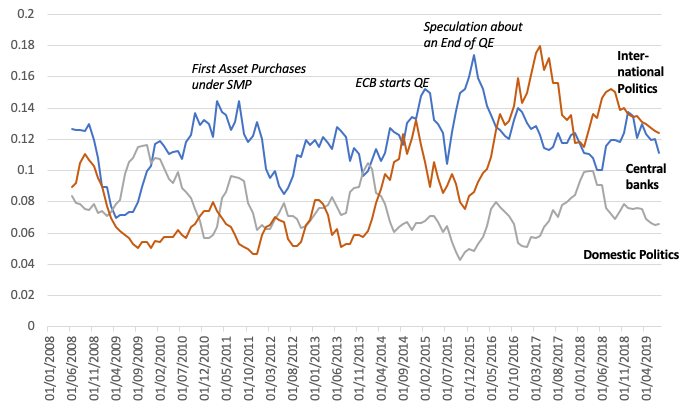The coronavirus crisis is hitting economies hard. This column argues that policymakers risk doing too little too late – and creating plenty of confusion on the way. It also suggests some lessons that can be learnt from the response to the last crisis.
It is becoming clear that the coronavirus epidemic is causing major disruptions to economic activity worldwide, and the quest for adequate policy responses is underway. At the outset of the crisis, many affected countries have pursued a step-by-step approach, weighing a wide array of medical as well as economic policy counter measures. As quarantine requirements are imposed and virus-testing and hospital capacities are expanded, economic policy has started to cushion the fall-out from an exogenous shock that is harming both the demand and the supply side. As a first line of defence, all the G7 countries' central banks have reacted by loosening monetary policy. Fiscal measures – ranging from targeting the effects of the outbreak directly (e.g. expanding sick-leave and short-hours schemes) to outright deficit spending programmes at the euro area level, as proposed by the French government – have been discussed and, partly, put into effect.
This piecemeal approach is misguided. We are confronted with a complex global crisis that is rooted in falling demand and supply as well as in high levels of uncertainty. It's not just citizens staying out of supermarkets and firms having to halt production, it's also profoundly blurred, or even bleak, expectations about the future that are bound to dampen investment and consumption (e.g. Bloom et al. 2007, Bloom 2009) over a longer period of time, with possibly grave consequences for economic growth and wellbeing. In this environment, governments should beware of worsening the situation by adding an extra dose of uncertainty themselves. Still, this is what is bound to happen in the course of the COVID-19 crisis. Recent economic history provides an analogy to the current situation.
Measuring policy uncertainty
Being an exogenous phenomenon by definition, policy uncertainty can hardly be gauged by economic variables such as financial market indicators or purchasing manager surveys. In recent years, a different approach has been developed that strives to measure uncertainty by analysing corpora of newspaper articles. A widely used example is the Economic Policy Uncertainty Index (EPU) proposed by Baker et al. (2016), which essentially produces counts of articles containing a set of search words (Note 1).
Figure 1 displays the EPU for Germany, while Figure 2 shows an alternative measure we constructed using the same query but a larger set of newspapers (Note 2). Both graphs have a similar four-peak shapes, with the financial crisis, the euro crisis, the rise of populist politics (the Brexit referendum, the election of Donald Trump, etc.) and the trade war as pivotal events. Strikingly, the COVID-19 crisis does not show up in the EPU yet. This is due to the initial reluctance of policymakers to introduce, or even discuss, fiscal or monetary measures in the face of a looming recession (when economic policy-related words are missing from an article, it doesn't appear in the indicator). As economic growth and policy become more and more acutely infected by the epidemic in coming months, a steep rise of the indicator can be expected.

Note: *indicator points, six-month moving average

Note: share of analysis corpus in the entire corpus, six-month moving average
The analysis can be enhanced substantially by applying text-mining techniques such as the topic-modelling algorithm Latent Dirichlet Allocation (Blei et al. 2003). As shown in Müller et al. (2018), LDA can be exerted in such a fashion as to isolate distinct factors that drive policy uncertainty over time. In Müller (2020), I demonstrate that the rise of economic policy uncertainty in Germany in recent years can be attributed to two factors: international politics and central banking.

Note: share of analysis corpus, six-month moving averages
While the increase of uncertainty stemming from international politics is largely driven by populist phenomena (Brexit, the Trump presidency) and therefore straightforward, the notion that central banking contributed to uncertainty may be somewhat surprising. After all, during the financial crisis and the subsequent European debt crisis, central banks embarked on an unprecedented mission to calm markets, thereby trying to reduce uncertainty. Still, according to our indicator, central banks contributed to policy uncertainty, alongside increased international uncertainty; the German government added rather little to overall political uncertainty (Figure 3) (Note 3).
A plausible explanation could be that central banking-related policy uncertainty rose because market participants and the wider public were unable to predict the timing and the effects of novel instruments such as large-scale asset purchases (‘quantitative easing,’ or QE). Once QE was in place, the prolongation and eventual phasing-out of the programme became issues of concern. Measures that were intended to soothe pessimistic animal spirits produced what could be called second-level uncertainty as an unintended side-effect. It took years until it subsided.
The costs of hesitation
Are there any lessons to be learnt from the last crisis for the current one? Arguably, economic uncertainty today stems more from the policy response to the virus than from the epidemic itself; after all, the path of contagion in a scenario without any containment seems rather predictable. Uncertainty over policy responses involves the imposition of specific types of measures as well as its timing. Not knowing what to expect from the authorities has the potential to render economic agents virtually paralysed. If you have come to expect quarantine measures in the near future, you might as well cancel all travel and purchasing plans today and start hoarding cash instead. Such wait-and-see behaviour provokes economic effects even if the quarantine measures are never imposed. Uncertainty by itself dampens economic activity.
To be fair, policymakers themselves are confronted with high degrees of uncertainty. There is no precedent for a pandemic of this magnitude in modern times, and imposing public health measures (such as travel bans, border closures, prohibiting public events, and closing down businesses) entails complex trade-offs that are changing over time as contagion evolves. In such a situation a certain degree of policy uncertainty is unavoidable.
Still, economic policy is different. Memories of the financial crisis are still fresh and many officials that were involved back then are still active. This is an advantage. After the crash of 2008, many crisis-fighting measures had to be invented. Now, the toolboxes are well-stacked. Quantitative easing, banking rescue and resolution mechanisms, public funds providing bridge loans to ailing companies, cash-for-clunkers subsidies – all this was novel back then. Now these instruments are available. Hence, economic policy need not be uncertainty-elevating. But up to now it remains largely unclear which measures governments and central banks are going to implement and when. Thus, policymakers risk creating extra uncertainty about the scope and timing of their interventions.
Conclusion: Show us the toolbox!
With regard to the COVID-19 crisis, these findings suggest that governments should not only think about certain policy measures but also about limiting associated uncertainty. It would be helpful if governments and central banks presented an entire toolbox as soon as possible, preferably in an internationally coordinated fashion (what are the G20 doing these days, anyway?), thereby front-loading the crisis response in order to positively influence expectations of businesses and consumers.
Clearly, decisions taken under great pressure can turn out to be wrong; and policy mistakes come at a cost. Nevertheless, it is helpful to bear in mind that reluctance and hesitance can be quite costly too. Doing too little too late, and spreading confusion on the way, can have lasting effects on the economy as a whole and on the livelihoods of individuals.
This article first appeared on www.VoxEU.org on March 14, 2020. Reproduced with permission.


